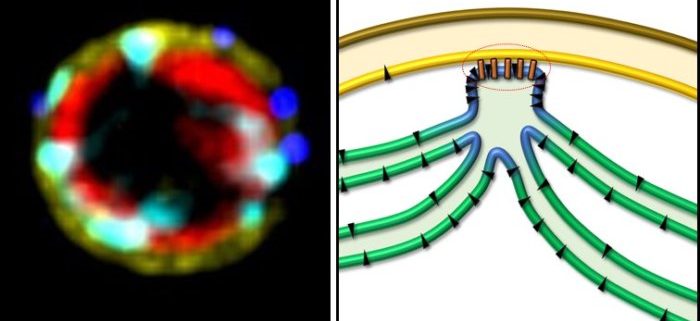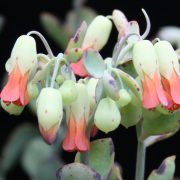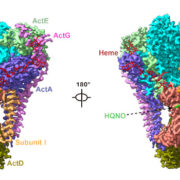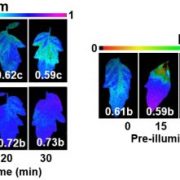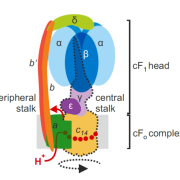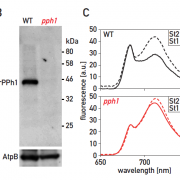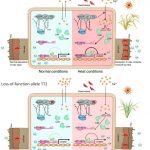Anchoring Membranes in Cyanobacteria
By Matthias Ostermeier, Steffen Heinz and Jörg Nickelsen at Molecular Plant Science at LMU Munich
Background: Cyanobacteria are photosynthetic bacteria and a sister group to chloroplasts, which are the site of photosynthesis in green algae and plants. Both have an internal membrane system called thylakoids harboring the four major protein complexes of the photosynthetic machinery. In Synechocystis sp. PCC 6803, a cyanobacterial model organism, thylakoids converge at distinct zones in the cell’s periphery and form local contact sites to the plasma membrane. Here, early photosystem II assembly takes place. The protein CurT is one of the main drivers for thylakoid shaping in cyanobacteria as well as in chloroplasts. By isolating a suppressor of a curT mutation in Synechocystis, we identified a new factor that determines the architecture of the thylakoid membrane system.
Question: In order to understand how photosynthetic membrane systems are made at the molecular level, we used results from genetic observations, biochemical experiments, different microscopy techniques and phylogenetic analysis to identify and characterize a new membrane-structuring factor from cyanobacteria.
Findings: The newly discovered factor AncM (anchor of convergence membranes) is required for attachment of thylakoids to the cell’s periphery in Synechocystis. By analyzing several mutant strains, we found that AncM and CurT act antagonistically in shaping the architecture of the thylakoid system. Furthermore, both factors partially colocalize in distinct spots at the cellular periphery where thylakoids converge. In line with this, accumulation and assembly of photosynthetic complexes, especially photosystem I and II, is disturbed in the absence of AncM. Overall, the obtained results draw a picture that assigns a glue-like function of AncM for attaching different cyanobacterial membrane systems. As a consequence, an unusual biogenic membrane subcompartment is formed.
Next steps: The results pave the way for further investigations of how thylakoid architecture and the assembly of photosynthetic complexes are achieved in Synechocystis. In particular, the distinct localization of AncM in peripheral spots now can serve as a subcellular landmark for elucidating the organization of photosynthetic membrane biogenesis in space.
Reference:
Matthias Ostermeier, Steffen Heinz, Julia Hamm, Jure Zabret, Anna Rast, Andreas Klingl, Marc M. Nowaczyk and Jörg Nickelsen. (2021). Thylakoid attachment to the plasma membrane in Synechocystis sp. PCC 6803 requires the AncM protein. Plant Cell. https://doi.org/10.1093/plcell/koab253


